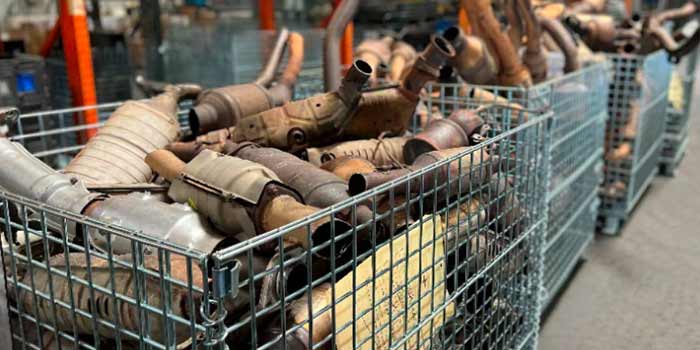
Automotive
If you drive a vehicle, you probably know that it’s equipped with a catalytic converter. This vital component reduces harmful emissions from your vehicle’s exhaust, making it a crucial part of your car’s emissions control system. Over time, catalytic converters can become damaged or worn, requiring replacement. But what does the catalytic converter replacement process entail, and what do you need to know before getting started? A catalytic converter is a critical component of a vehicle’s exhaust system that plays an essential role in reducing harmful emissions. It’s an integral part of the vehicle’s emission control system, which ensures that the exhaust gases are clean and environmentally friendly. A catalytic converter works by using a combination of heat and a catalyst to convert the harmful pollutants in the exhaust gases into less harmful ones. The catalysts used in catalytic converter recycling Brisbane are typically made of precious metals such as platinum, palladium, or rhodium. These metals facilitate the conversion process by speeding up the chemical reactions that take place in the catalytic converter recycling Brisbane.
The catalytic converter is located in a vehicle’s exhaust system, usually between the engine and the muffler. When the engine burns fuel, it creates exhaust gases that contain harmful pollutants such as carbon monoxide, nitrogen oxides, and hydrocarbons. As the exhaust gases pass through the catalytic converter, the catalysts in the converter cause a chemical reaction that converts these harmful pollutants into less harmful ones, such as carbon dioxide, nitrogen, and water vapor. The chemical reaction that takes place in the catalytic converter is complex and involves several steps. The catalysts in the converter are coated onto a ceramic or metallic substrate, which provides a large surface area for the chemical reactions to take place. The exhaust gases flow through the substrate, and the catalysts promote the conversion of harmful pollutants into less harmful ones.
Now That They’ve Reviewed What A Catalytic Converter Is, Let’s Move On To The Replacement Process. Here’s What You Can Expect:
Diagnostics: The first step in the catalytic converter replacement process is diagnostics. A mechanic will use specialized equipment to determine whether your catalytic converter is the source of the problem. If your car is showing symptoms such as poor fuel economy, decreased acceleration, or strange noises coming from the exhaust, it could be a sign that your catalytic converter needs to be replaced.
Inspection: If it’s determined that your catalytic converter recycling Brisbane needs to be replaced, the next step is to inspect the rest of your exhaust system. This is important because a damaged or clogged catalytic converter can often be the result of another problem in your exhaust system, such as a faulty oxygen sensor or a damaged muffler.
Removal: Once it’s been determined that your catalytic converter needs to be replaced and the rest of your exhaust system has been inspected, the old catalytic converter will be removed from your vehicle. This usually involves cutting it out and welding in a new one.
Installation: The new catalytic converter will then be installed, along with any necessary gaskets, bolts, or other hardware.
Testing: Once the new catalytic converter has been installed, your mechanic will test your vehicle to ensure that everything is working properly. This usually involves a test drive and a final inspection of the exhaust system.
In conclusion, understanding the catalytic converter replacement process is important for anyone who owns a vehicle. By knowing what to expect, you can make informed decisions about your car’s maintenance and ensure that your vehicle is running as efficiently and cleanly as possible. If you suspect that your catalytic converter needs to be replaced, don’t delay – contact a trusted mechanic today to schedule an inspection and get your vehicle back on the road in top condition. Replacing a catalytic converter is a complex process that should only be undertaken by a trained and experienced mechanic. It’s important to choose a reputable repair shop that specializes in exhaust system repairs to ensure that the replacement is done correctly. Additionally, it’s important to note that catalytic converter recycling Brisbane standdesigned to last a long time, so if you find yourself needing to replace yours, it’s a good idea to have your entire exhaust system inspected to identify any underlying problems that may have caused the catalytic converter to fail.